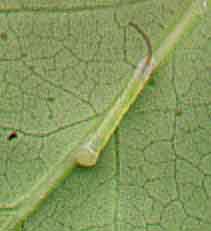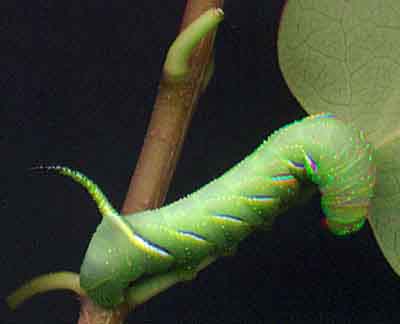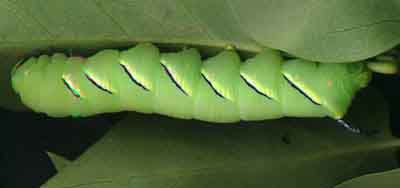SPHINX KALMIAE, THE LAUREL SPHINX


This site has been created by
Bill Oehlke at oehlkew@islandtelecom.com
Comments, suggestions and/or additional information are welcomed by Bill.
TAXONOMY:Family: Sphingidae |
MIDI MUSICcopyright C. Odenkirk ON.OFF |
Laurel Sphinx larvae feed primarily on lilac and
fringe. This day old larva is well camouflaged on the underside main lilac leaf vein.
|
 |
The fourth instar larvae to the right now has
some of the distinctive
markings and colouration of kalmiae and can consume several lilac leaves in a 24 hour period,
leaving just a
centimeter or two of leaf stem. |  |
The fifth instar larva to the right will leave foliage in a day or so and crawl around the bottom of the container looking for soil in which to pupate. Scans by Bill Oehlke |  |